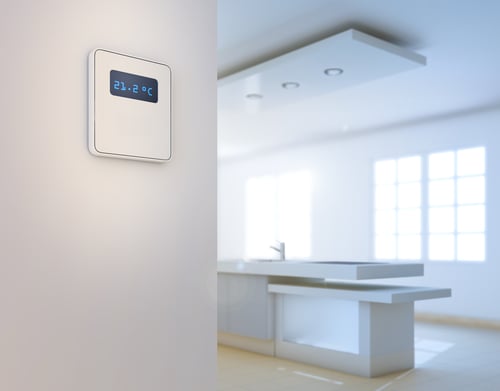
The HVAC sector from here to the future: the trends that set the pace
HoReCa, Home Appliance and HVAC are some of the application sectors in which we at SLIM have been operating alongside a few companies for more than 50 years to produce light signaling.
Within the HVAC sector, the demand for lighting components is based on safe and quality solutions formulated according to technical specifications for light intensity, temperature resistance and an adequate degree of shock resistance.
In recent years, the sector has undergone a significant transformation, pushing manufacturers to implement substantial changes in the design and production of HVAC systems. These changes are necessary to meet new global demands, which include greater energy efficiency, the integration of sustainable technologies, and the ability to adapt to increasingly stringent environmental regulations. Manufacturers will therefore need to focus on technological innovation, adopting eco-friendly materials, and improving climate control performance to respond to the new challenges of the global market adequately.
If you would like to keep up to date with the latest news on SLIM application areas and light signaling products, click on the button below and subscribe to our newsletter.
The meaning of the acronym HVAC
HVAC is an English acronym for Heating, Ventilation & Air Conditioning. The acronym refers collectively to the systems, installations and technologies used to provide heating, air conditioning and room ventilation.
This term includes all the solutions for regulating and controlling thermal comfort: from domestic or office air conditioners to large systems used in industrial complexes and tertiary buildings. In general, HVAC covers the entire management and treatment of a building's air so that it is completely healthy and safe.
Today, the design of a quality HVAC solution is based on the integration of the most advanced technologies to optimize the performance of the heating, ventilation, and air conditioning system. The implementation of these systems is done to ensure energy savings (link to HVAC and energy savings article) and operational efficiency, thus reducing the impact on the environment.
This is a very important industry worldwide, which is continuously growing and expanding, especially in China and Eastern Europe.
At SLIM we currently operate within the HVAC sector for the development of standard light indicators and switches for thermal control and water heating applications such as boilers, water heaters, chronothermostats, thermostats, and temperature controllers, especially for the domestic segment. The lighting solution range is mainly used in this application sector as a functional signaling system, but in recent times it has also been directed towards purely aesthetic purposes, through the creation of customized proposals. These proposals involve the use of LED strips or optical fiber to create lighting profiles that can be applied to various HVAC devices to illuminate specific details in a minimalistic and stylish way.
HVAC systems: what is the latest news?
The HVAC sector is undergoing significant innovation and transformation in 2024. The current market evolution and the growing focus on microclimatic comfort, with consideration for reduced environmental impact, have led companies in the sector to invest more in the research and development of high-efficiency HVAC solutions. In this regard, some of the main innovations include:
- Integration of renewable energy: increasingly, HVAC systems are being designed to integrate with renewable energy sources such as solar and geothermal. These systems reduce dependence on fossil fuels and are more environmentally friendly, also offering the possibility to sell excess energy back to the power grid.
- High-efficiency heat pumps: new technologies are enhancing the performance of heat pumps even in colder climates, making them a viable alternative to traditional heating systems due to their energy efficiency and ability to reduce carbon emissions.
- Smart technologies: the adoption of smart HVAC systems continues to grow. These systems include Wi-Fi thermostats and sensors that allow for remote monitoring and control, optimizing energy use and improving user comfort. Digitalization also enables predictive maintenance, reducing downtime and operational costs.
- Improvement of indoor air quality: following the COVID-19 pandemic, there is increased attention to indoor air quality (IAQ). Modern HVAC solutions include advanced air purification and filtration systems that reduce pollutants, allergens, and pathogens, contributing to healthier indoor environments.
- Predictive maintenance: the use of sensors and machine learning algorithms for predictive maintenance is on the rise. These technologies allow for the identification of issues before significant failures occur, improving efficiency and extending the lifespan of HVAC systems.

These trends demonstrate how the HVAC industry is evolving to meet the demands for sustainability, energy efficiency, and air quality, offering increasingly advanced and environmentally friendly solutions. Some leading companies in the field of regulation and control, such as Fantini Cosmi and Thermowatt, are examples of this, moving towards the development of increasingly advanced solutions.
What are the innovative aspects to focus on for the development of the HVAC sector? Find out in the in-depth study dedicated to Developments in the HVAC sector: hi-tech systems for sustainable comfort, two experts in the sector give their point of view on the drivers of the moment.
